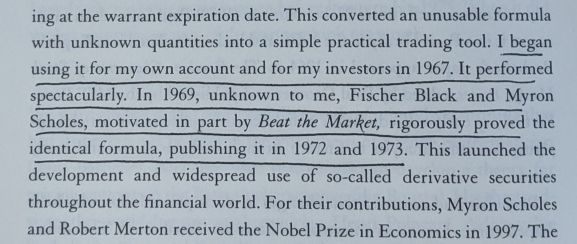Book Summary of A Man for All Markets
Ed Thorp beat the casino in blackjack, invented the world’s first wearable computer, and generated one of the best track records in the investment industry.

Ed Thorp beat the casino in blackjack, invented the world’s first wearable computer, and generated one of the best track records in the investment industry. These are my main takeaways of his book:
Education builds software for your brain. Thorp grew up poor during the Great Depression and taught himself how to count cards and invest in the market. He said “education made all the difference” in his life and to never be afraid of a question you can’t answer.

Don’t let normal volatility shake you out of your portfolio. Thorp lost money during the first live test of his blackjack system. Rather than get discouraged and write off the strategy, he knew the small loss was within the range of potential outcomes. Investors need to be mindful of the historical extremes of their portfolio so that they don’t bail when we inevitably have another recession.

Life is a mix of chance and choice. Think of chance as the cards you’re dealt in life. Choice is how you deal with them. Don’t get derailed when bad things happen – focus on what you can control and move forward.
Thorp knew when to shift his focus. He started as a mathematics professor, then counted cards, then became an investor. Thorp wasn’t married to one field and knew when to jump on a better opportunity, regardless of his original life plan. He always asked himself “if you do this, what do you want to happen?” and “if you do this, what do you think will happen?”

Sometimes the cure ends up being the cause. Portfolio insurance was a popular strategy in the 1980s that tried to limit stock downside. The strategy exacerbated Black Monday where stocks fell 22% in a single day. The hedging mechanism of portfolio insurance is awfully similar to today’s volatility targeting strategies (that have $800 billion under management).

The power of compound growth. This book had the best (and simplest) example of compound growth I’ve ever read. Imagine someone has $1 and each time it doubles they take the $1 profit away. Then imagine someone who always reinvests the profit. After ten doublings, the first person has $11 and the second person has $1,024. Investors shouldn’t get in the way of compounding – the 8th wonder of the world.

Thorp had a huge impact on the financial industry. Bill Gross read Thorp’s book on blackjack, turned $200 into $10,000, and went on to start PIMCO – the $2 trillion investment firm. Thorp was the first limited partner of Citadel, now one of the world’s largest hedge funds. Princeton Newport Partners, Thorp’s first fund, compounded at 19% per year (after fees) from 1969 to 1988 with zero losing quarters.

Here’s a great 5-minute interview with Thorp. I should also point out he’s the youngest looking 87 year old I’ve ever seen.
A Man for All Markets is a great book and I highly recommend it.
